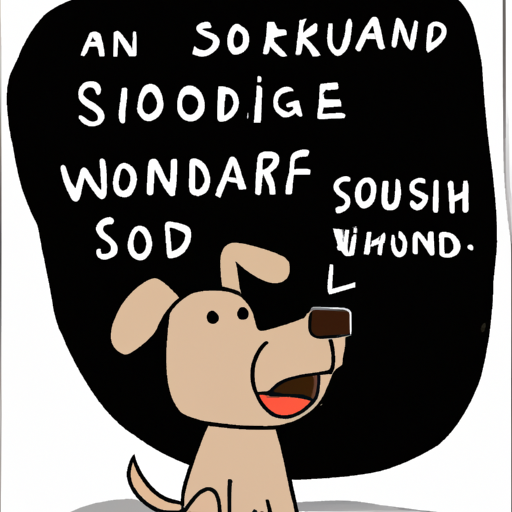The world of dogs is fascinating. From their enthusiastic greetings when we walk through the door to their expressive faces when they want a treat, dogs have unique ways of communicating. But have you ever wondered, “What language do dogs speak?”
While dogs do not communicate in the same way humans do, they have their own complex language made up of body language, vocalizations, and even scent markers. This article will delve into the fascinating world of canine communication to help you better understand what your four-legged friend is trying to say.
Table of Contents
- Understanding Canine Communication
- Body Language: The Canine’s Primary Language
- Vocalizations: Beyond Just Barking
- Scent Markers: An Underappreciated Form of Communication
- How Humans Can Communicate With Dogs
- Frequently Asked Questions
Key Takeaways
- Dogs communicate through a combination of body language, vocalizations, and scent markers.
- Understanding your dog’s communication can strengthen your bond and improve their behavior.
- Humans can learn to “speak dog” and effectively communicate with their pets.
Understanding Canine Communication
Unlike humans, who primarily use verbal language, dogs communicate in a variety of ways. Their primary form of communication is body language, but they also use vocalizations and scent markings to convey messages to other dogs and humans. Understanding these forms of communication can help you better understand your dog’s needs, emotions, and behaviors.
Body Language: The Canine’s Primary Language
Dogs use every part of their body to communicate, from their ears and tail to their posture and facial expressions. For example, when a dog is relaxed and happy, their body will be loose and their tail will wag gently. In contrast, a dog that is scared or nervous may have tense muscles, flattened ears, and a tucked tail. One Top Dog provides a more comprehensive guide to understanding your dog’s body language.
| Dog’s State | Body Language |
|---|---|
| Happy and relaxed | Loose body, tail wagging, ears up |
| Scared or nervous | Tense body, flattened ears, tail tucked |
Vocalizations: Beyond Just Barking
While barking is the most commonly recognized form of canine vocalization, dogs use a wide range of sounds to communicate different messages. Growls, howls, whimpers, and even sighs can all communicate different emotions or intentions. For example, a whimper might indicate pain or distress, while a growl could be a warning or a sign of fear. You can learn more about the different types of canine vocalizations at The Spruce Pets.
Scent Markers: An Underappreciated Form of Communication
While humans rely heavily on sight and sound for communication, dogs use their powerful noses to gather information about the world around them. They leave scent markers to communicate with other dogs about their presence, reproductive status, and more. This form of communication is often overlooked by humans, but it’s an integral part of how dogs interact with each other.
How Humans Can Communicate With Dogs
While we can’t converse with our dogs in the same way we do with other humans, we can learn to understand their unique forms of communication and respond in ways they understand. Simple things like maintaining a calm demeanor, using consistent commands, and understanding their body language can go a long way in improving communication with your pet. One Top Dog provides some helpful tips on how to improve communication with your dog.
Frequently Asked Questions
1. Can dogs understand human language?
While dogs can’t understand human language in the same way we do, they can learn to associate certain words or phrases with actions or objects. For example, many dogs learn to associate the word “sit” with the act of sitting down.
2. How can I better understand my dog’s body language?
Paying close attention to your dog’s body language and correlating it with their behavior can help you better understand what they’re trying to communicate. There are also many resources available online, such as One Top Dog’s guide to dog body language, that can help you interpret your dog’s signals.
3. Can dogs communicate with each other in the same way they communicate with humans?
While dogs do use the same forms of communication (body language, vocalizations, scent markers) with both dogs and humans, the specifics of their communication may vary based on the social dynamics of the situation. For example, dogs may use different signals or postures when interacting with a familiar dog versus an unfamiliar human.
In conclusion, while dogs may not “speak” in the same way humans do, they have their own complex language that allows them to communicate effectively with both humans and other dogs. By taking the time to understand this language, we can strengthen our bond with our four-legged friends and improve their overall wellbeing.



